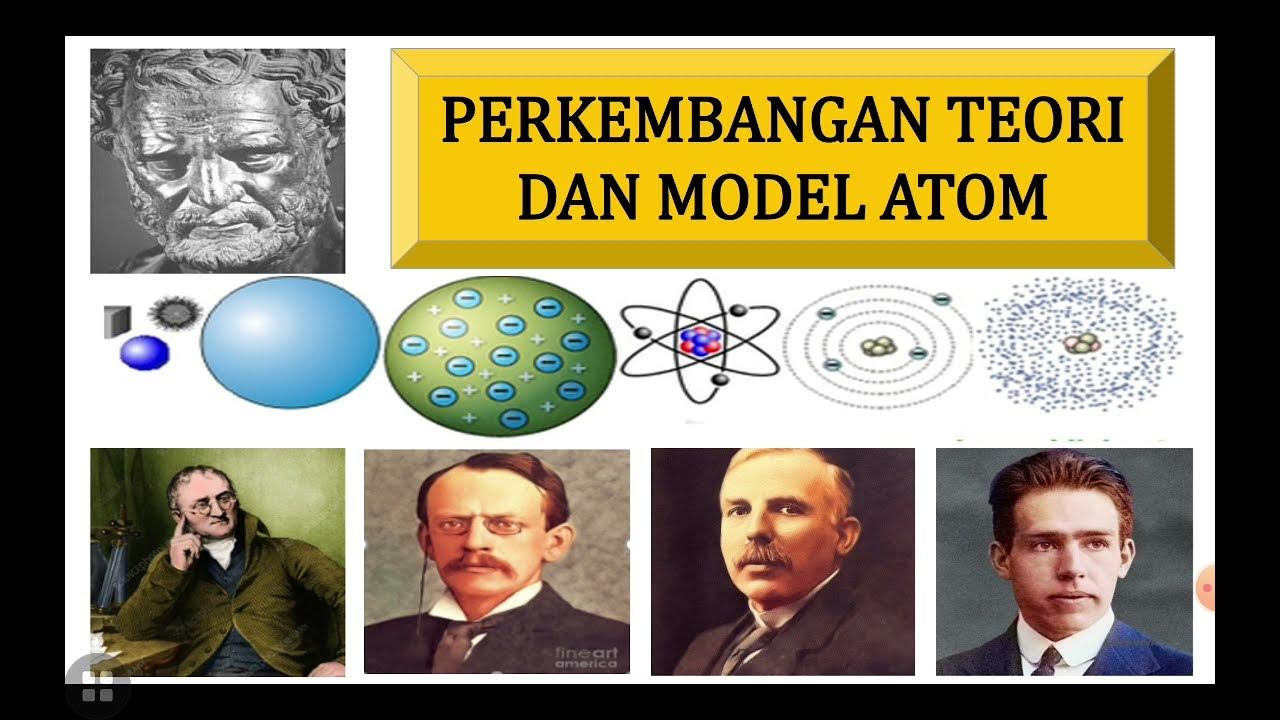Teori Atom Thomson | Hey! Chemistry #3
Summary
TLDRThe video discusses the evolution of atomic theory, focusing on Joseph John Thomson's contributions that challenged John Dalton's ideas. Thomson's 1897 experiments with cathode rays revealed the existence of electrons, negatively charged particles within atoms, suggesting that atoms are not solid spheres as Dalton proposed. Thomson likened the structure of an atom to a 'raisin bread' model, where electrons are scattered throughout a positively charged medium. Despite its limitations in explaining the arrangement of charges, Thomson's work paved the way for future developments in atomic theory.
Takeaways
- 😀 Dalton's atomic theory was foundational, but it had limitations.
- 😀 Joseph John Thomson built upon Dalton's work to reveal new insights about atoms.
- 😀 Thomson discovered the electron, a negatively charged particle within atoms.
- 😀 In 1897, Thomson conducted a cathode ray experiment using a vacuum tube.
- 😀 The cathode rays were deflected by magnetic fields, indicating their charged nature.
- 😀 Thomson proposed the 'plum pudding' model of the atom, with electrons scattered in a positive 'soup'.
- 😀 This model challenged Dalton's view of the atom as a solid sphere.
- 😀 Thomson's work paved the way for understanding atomic structure and chemical bonding.
- 😀 The exact arrangement of electrons within atoms remains uncertain.
- 😀 Thomson's findings showed that atoms are not the smallest units of matter.
Q & A
What was John Dalton's main contribution to atomic theory?
-John Dalton proposed that atoms are solid spheres, which are indivisible and the smallest units of matter.
Who was Joseph John Thomson, and what did he discover?
-Joseph John Thomson was an English scientist who discovered the electron in 1897, challenging Dalton's solid sphere model of the atom.
What experiment did Thomson conduct to discover the electron?
-Thomson conducted experiments using cathode rays in a vacuum tube, which allowed him to measure the mass-to-charge ratio of the particles.
What did Thomson's discovery of electrons imply about Dalton's theory?
-Thomson's discovery implied that atoms are not indivisible as Dalton suggested, since they contain smaller charged particles (electrons).
How did Thomson visualize the structure of the atom?
-Thomson compared the atom to a 'plum pudding' model, where electrons are embedded within a positively charged 'pudding'.
What was a key limitation of Thomson's atomic model?
-Thomson's model could not adequately explain the arrangement of positive and negative charges within the atom.
How did Thomson's work influence later atomic theories?
-Thomson's identification of electrons led to further developments in atomic models, eventually leading to more complex structures proposed by later scientists.
What analogy did Thomson use to describe electron distribution in an atom?
-Thomson likened the distribution of electrons to raisins in a fruitcake, illustrating that electrons are spread throughout the atom.
What does the term 'cathode ray' refer to?
-Cathode rays are streams of electrons observed in vacuum tubes, which were pivotal in Thomson's experiments.
Why is Thomson's discovery significant in the field of chemistry?
-Thomson's discovery of the electron laid the groundwork for modern atomic theory and helped explain chemical bonding and the behavior of matter.
Outlines

Cette section est réservée aux utilisateurs payants. Améliorez votre compte pour accéder à cette section.
Améliorer maintenantMindmap

Cette section est réservée aux utilisateurs payants. Améliorez votre compte pour accéder à cette section.
Améliorer maintenantKeywords

Cette section est réservée aux utilisateurs payants. Améliorez votre compte pour accéder à cette section.
Améliorer maintenantHighlights

Cette section est réservée aux utilisateurs payants. Améliorez votre compte pour accéder à cette section.
Améliorer maintenantTranscripts

Cette section est réservée aux utilisateurs payants. Améliorez votre compte pour accéder à cette section.
Améliorer maintenantVoir Plus de Vidéos Connexes

Kimia X - Struktur Atom #3 | Perkembangan Teori dan Model Atom

OCR Gateway A (9-1) P1.1.1 - The Model of an Atom Summary

Modelos de Dalton e Thomson [Módulo 02 - Aula 01]

Teori dan Model Atom Dalton | Video Belajar Kelas 10 IPA - Kimia

Modelo Atômico de Thomson | Modelo Pudim de Passas | Atomística | Química Geral

Struktur Atom (1) | Perkembangan Teori Atom | Kimia Kelas 10
5.0 / 5 (0 votes)
